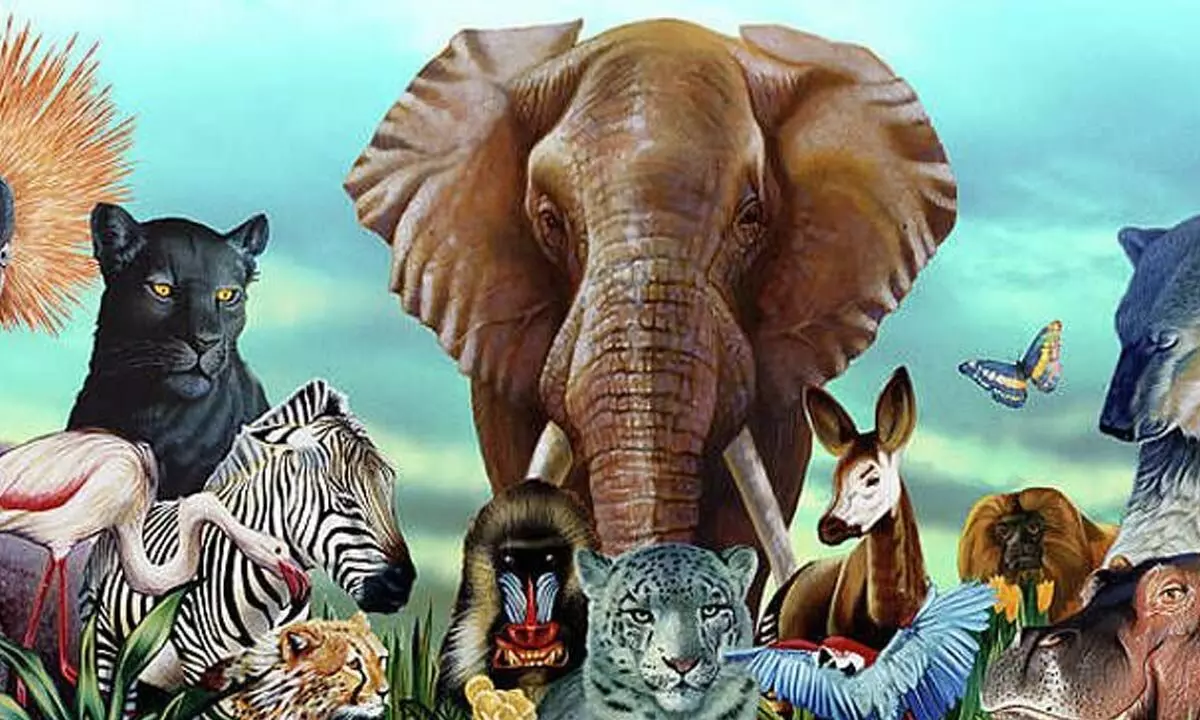Live
- They always want me to win, and now I feel lucky to have been offered a story like ‘Zebra’: Satyadev Kancharana
- ‘Democracy first, humanity first’: PM Modi in Guyana's parliament on two countries' similarities
- PKL Season 11: Telugu Titans register third straight win to top standings
- Is Pollution Contributing to Your COPD?
- NASA Unveils Underwater Robots for Exploring Jupiter's Moons
- Additional Central forces arrive in violence-hit Manipur
- AR Rahman and Saira Banu’s Divorce: Legal Insights into Common Issues in Bollywood Marriages
- 82.7 pc work completed in HPCL Rajasthan Refinery area: official
- Curfew relaxation extended in 5 Manipur districts on Friday
- Tab scam prompts Bengal govt to adopt caution over fund disbursement
Just In
Another jewel in crown of Telangana


It is a very good news to hear from media that the Telangana government is intending to set up a new zoo on the outskirts of Hyderabad.
It is a very good news to hear from media that the Telangana government is intending to set up a new zoo on the outskirts of Hyderabad. It will be a big boost to tourism, given the around 3 million footfalls at the existing Nehru Zoological Park, the highest among the various tourist spots in and around city.
The purpose of zoo goes beyond display of animals and tourism promotion. It is to compliment and strengthen the national efforts in conservation of wild animals. A zoo helps develop empathy and builds understanding and awareness about the need for conservation of wilderness and ecological balance thorough various conservation education and outreach programmes. Second, they provide a platform for co-ordinated breeding under ex-situ conditions and raise stocks of endangered animals for rehabilitation in their original habitats. Third, zoos support in collecting data and undertaking scientific studies directly or in collaboration with research institutes and universities. Fourth, they play a very important role in minimising man-animal conflicts by capture of wild animals that stray into human habitations and release them into wild. Fifth, they house the orphaned wild animals which are rescued from circuses and other illegal confinements. These roles are very well in conformity with the perspective of global conservation community and Article 9 of the Convention on Biological Diversity (CBD) for which our country is a signatory.
Evolution of modern zoos
The zoos that we see today are biological conservation centres that were evolved from the menageries of the past which were basically meant for recreation and entertainment. Departing from the earlier caged structures, the zoo architecture finds a continuous transformation in design, landscaping and animal display method to match with features of natural habitats and to suite the behavioural pattern of the animals.
A big change in zoo design and architecture took place in 1880s with creation of naturalistic and open moated enclosures at Hamburg Zoo (Germany) by Carl Hagenbeck. Most of the modern zoos in India were modelled on this pattern. Nehru Zoological Park at Hyderabad (established in 1963) is one of the good examples to follow this model with little variations. While improving the Woodland Park Zoo at Seattle (USA) in 1976, the existing designs were further modified and advanced into immersive display of exhibits under the guidance of architects, Johns and Johns.
Works of immersion landscaping initiated in 2011-12 have put Hyderabad zoo and various other zoos in the country in a state of continuous improvement. In parallel to changes in planning and zoo designs, there have been constant improvements in the areas of enclosure enrichment, animal welfare, captive breeding, diet arrangements, veterinary care, conservation education, visitor management and various other aspects in India and abroad.
Appropriate biz model of zoos
It is a fact that most of the popular zoos in the world do not make profits but strive to achieve self-sufficiency. The profits earned would generally be ploughed back to undertake redevelopment, upgradation and expansion of the zoos. Hardly there is any zoo in our country which survives without the support of grants and financial assistance from the government. It is, therefore appropriate not to treat zoos as profit centers and to manage them as state owned enterprise instead of Public Private Partnership (PPP) entities. If forest lands are involved there would be legal hurdles besides long-term conservation threats in case of private participation is brought in.
Further, the example of shelving the project of developing a night safari and bird park on PPP mode in Kothaguda Reserve Forest of Hyderabad about a decade back deters to proceed in that direction. Some important zoos in the world are run by non-profit societies and trusts. Functioning of San Diego Zoo under the aegis of Zoological Society of San Diego is a good example. Similarly, Singapore Zoo, London Zoo and Jersey Zoo are operated by Mandaic Wildlife Society, Zoological Society of London and Durrell wildlife Conservation Trust respectively.
Wisdom of Telangana will certainly prevail in choosing a right business model. With the committed leadership and strong will of the government, the day is not far off to witness development of a naturalistic, conservation centric multifunctional zoo with state-of-the-art facilities. Such a zoo will certainly be a jewel in the crown of green Telangana.
(Writer is Former Principal Chief Conservator of Forest &Head of Forest Force, Andhra Pradesh)

© 2024 Hyderabad Media House Limited/The Hans India. All rights reserved. Powered by hocalwire.com






